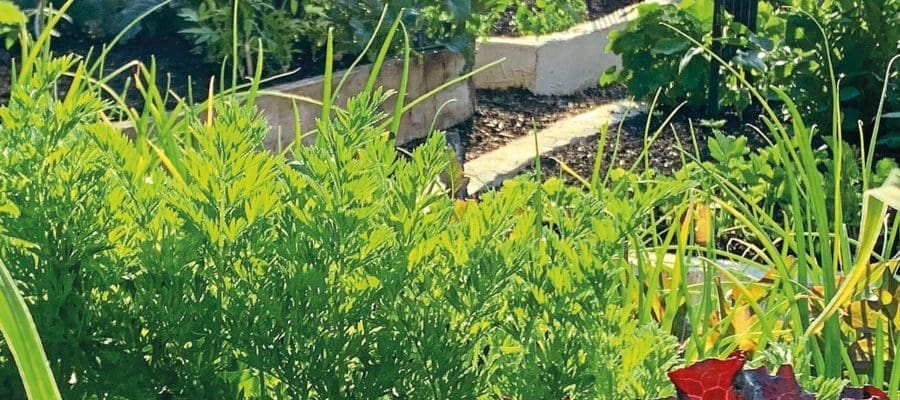Companion planting is one of those ideas that is loved by some gardeners but disputed by others. Organic gardening expert Becky Searle cuts through the confusion to bring you the facts.
We often see charts telling us that tomatoes don’t like potatoes, and beans don’t like alliums. Some contradict others, and then working out where to plant anything becomes hugely complicated. However, many believe companion planting is a very useful tool, providing that it is making your gardening easier, not more challenging! The truth is that companion planting needn’t be such a difficult thing to do, we just have to slightly reframe how we think about it.
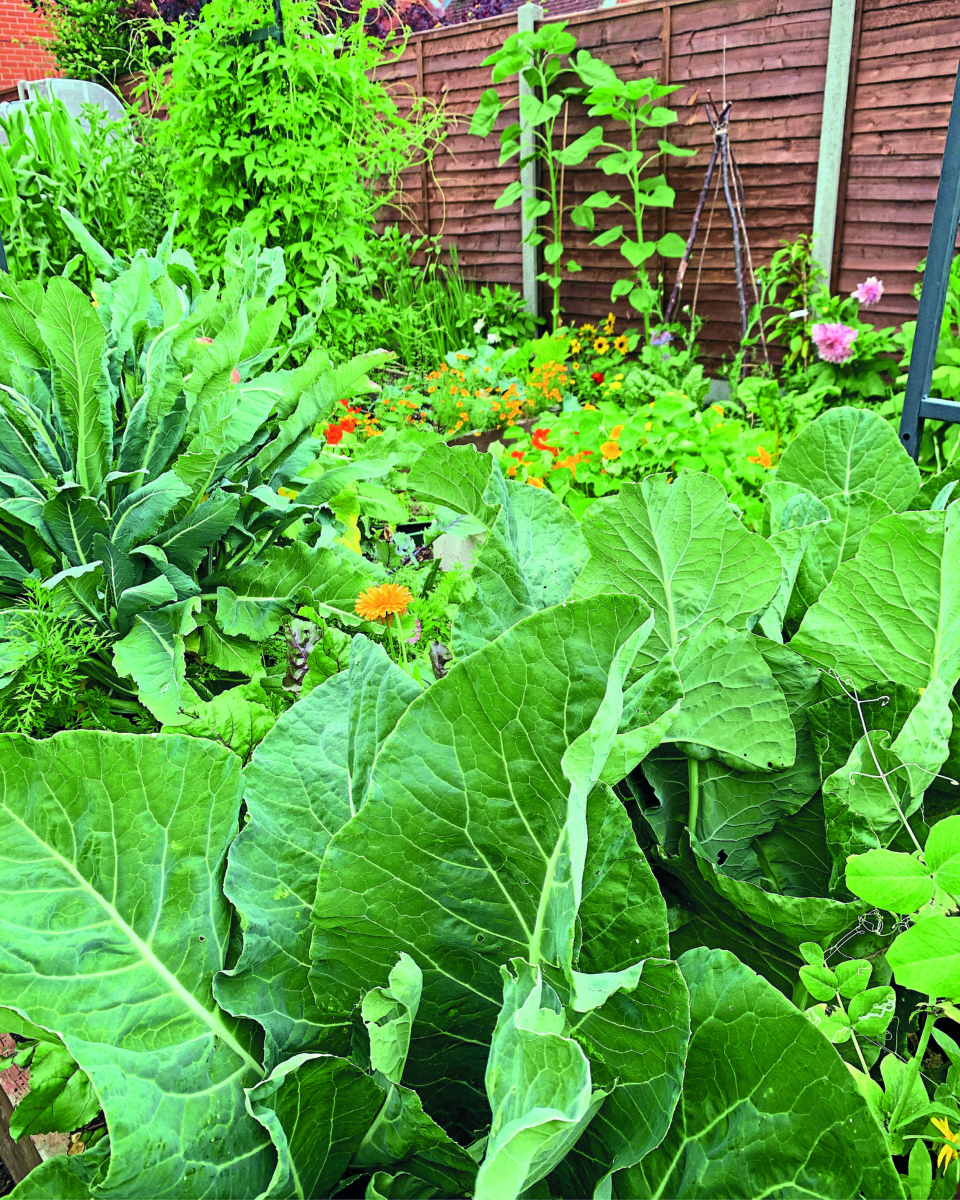
Good bedfellows
It is a fact that some plants just don’t ‘get along’; some will strangle others out, compete for light, water or nutrients or just not grow well as neighbours. People’s experience of the latter seems to differ wildly. Some people claim that they simply cannot grow beans next to alliums such as onions, and others will say that they do it every year and never have any issues.
Why try companion planting?
Companion planting is, first and foremost, about pest management. It’s about holistic garden health and creating abundance through carefully selected planting.
Companion plants can be used for either drawing in beneficial insects that prey on our pests, drawing pests away from your crops or deterring pests from crops. So, if these plants are in the general vicinity of your crops, they will be ‘companioning’. Knowing this relieves us of the utter bewilderment of trying to figure out where to plant everything year on year.

Another great thing about companion plants is that they are almost all brilliant at pulling in pollinators – giving them another important function in the garden. And of course, if they are attractive to pollinators, they will be attractive for us too, providing beautiful displays of flowers for our gardens.
Beneficial insects and their favourite flowers
Most of us are joyous when we see a ladybird in our gardens, particularly if they are heading in the direction of a particularly nasty aphid colony. I for one have spent hours trying to get ladybirds to walk in the right direction to find the aphids, only for them to fly off before eating anything.
Ladybirds might be the cutest and most familiar of our little garden helpers, but they are by no means the only ones.
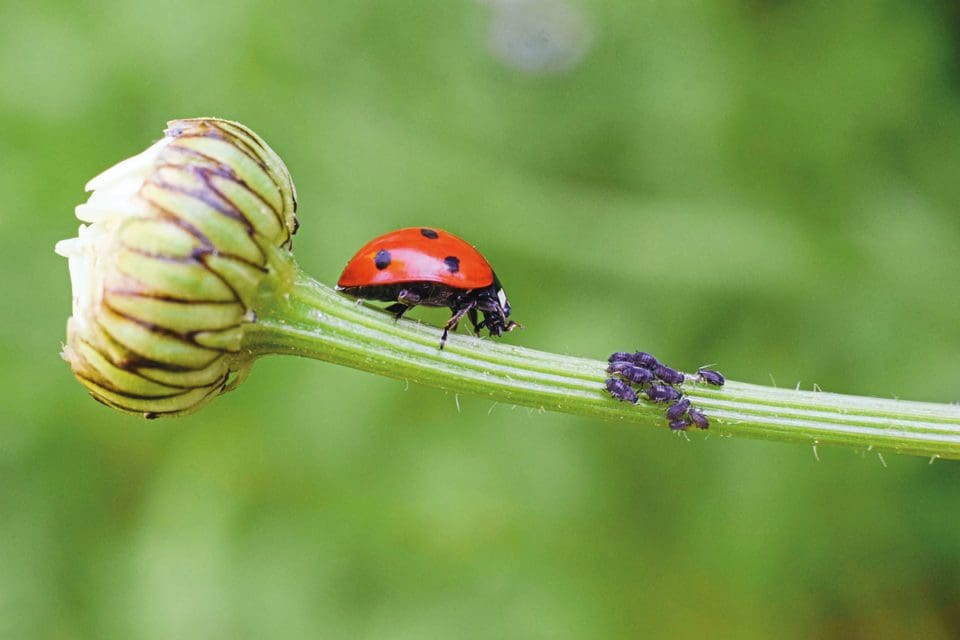
Flowers to attract them: many including chives, fennel, angelica, feverfew, cosmos, sweet alyssum, dill, calendula.
Wasps
One of our most loathed garden insects is also one of our most useful. The common wasp is an effective pollinator and voracious predator of insects such as caterpillars early in the season. By late summer they switch to foraging for sugary foods and can be a pain around your picnic, but the ones that go after your jam sandwiches are just a tiny proportion of the UK’s wasps.
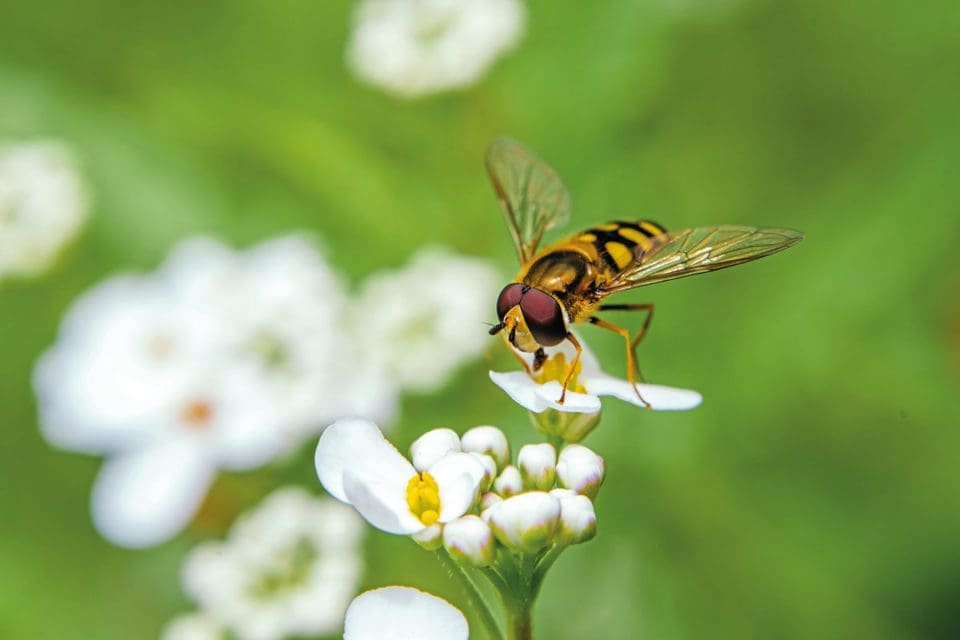
There are around 9000 species of wasp in the UK that range from the larger and familiar ones to microscopic ones, all of which are voracious predators of our insect pests, and important pollinators. They are attracted to the sticky sugars excreted by aphids, so they enjoy feeding on aphids as well as other invertebrates. Some wasps are also parasitic and lay their eggs inside caterpillars, causing the host to die. This is a way of controlling the cabbage white caterpillars.
Flowers to attract them: zinnia, lemon balm, marigold and thyme will all help to attract in the smaller wasps.
Lacewings
Lacewings are perhaps something that not many of us come across on a day-to-day basis, but they are brilliant garden friends that should be encouraged with companion planting. Lacewings are attracted to pollen-rich flowers, so if you are busy attracting other beneficial insects, the chances are that lacewings will show up too. The larvae are particularly hungry and can eat around 200 aphids, blackfly or greenfly or even small caterpillars per week.
Flowers to attract them: dill, yarrow and dandelions are all great at attracting lacewings. It is also important to tolerate small outbreaks of aphids and other pests as they are the food source.
Hoverflies
Hoverflies are also a very useful garden insect. Hoverfly larvae can eat up to 50 aphids a day, so they are wonderful to have around for pest control and the adult flies are not only completely harmless, but also great pollinators too.
Flowers to attract them: cosmos, tagetes, fennel, sweet alyssum and flowering brassicas are all great choices to attract hoverflies, but there are many others too!
These are just a small selection of the wonderful insects that we can attract into our gardens with companion planting. We should always take a view to encouraging as much diversity in our gardens as possible as there will always be more insect predators than pests, providing that we welcome and encourage them.
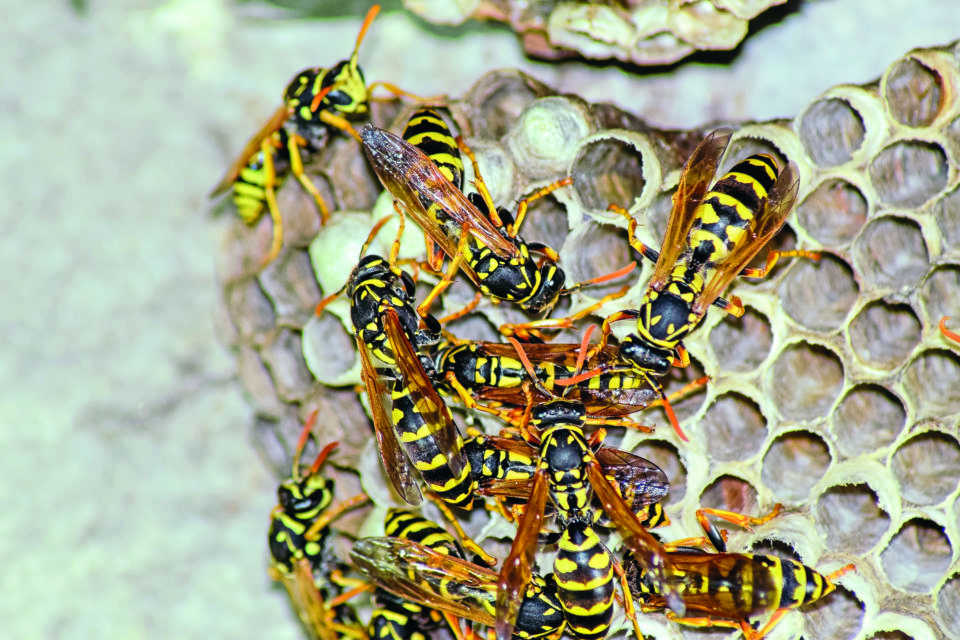
Drawing pests away
Companion plants can also act as sinks to draw aphids and other insect pests. By planting sacrificial but fast-growing and resilient plants like nasturtiums we can offer the pests somewhere other than our crops to go. In the case of nasturtiums, we can cut them back very hard to remove any unsightly material and they will soon regrow.
Choose your companions wisely. Sticking with nasturtiums for a moment, these can get really big and we certainly don’t want to grow anything that would outcompete our crops. So, we must make sure we are not planting them next to smaller crops that may become overwhelmed. After all, the idea of companion planting is to increase your crop yields.
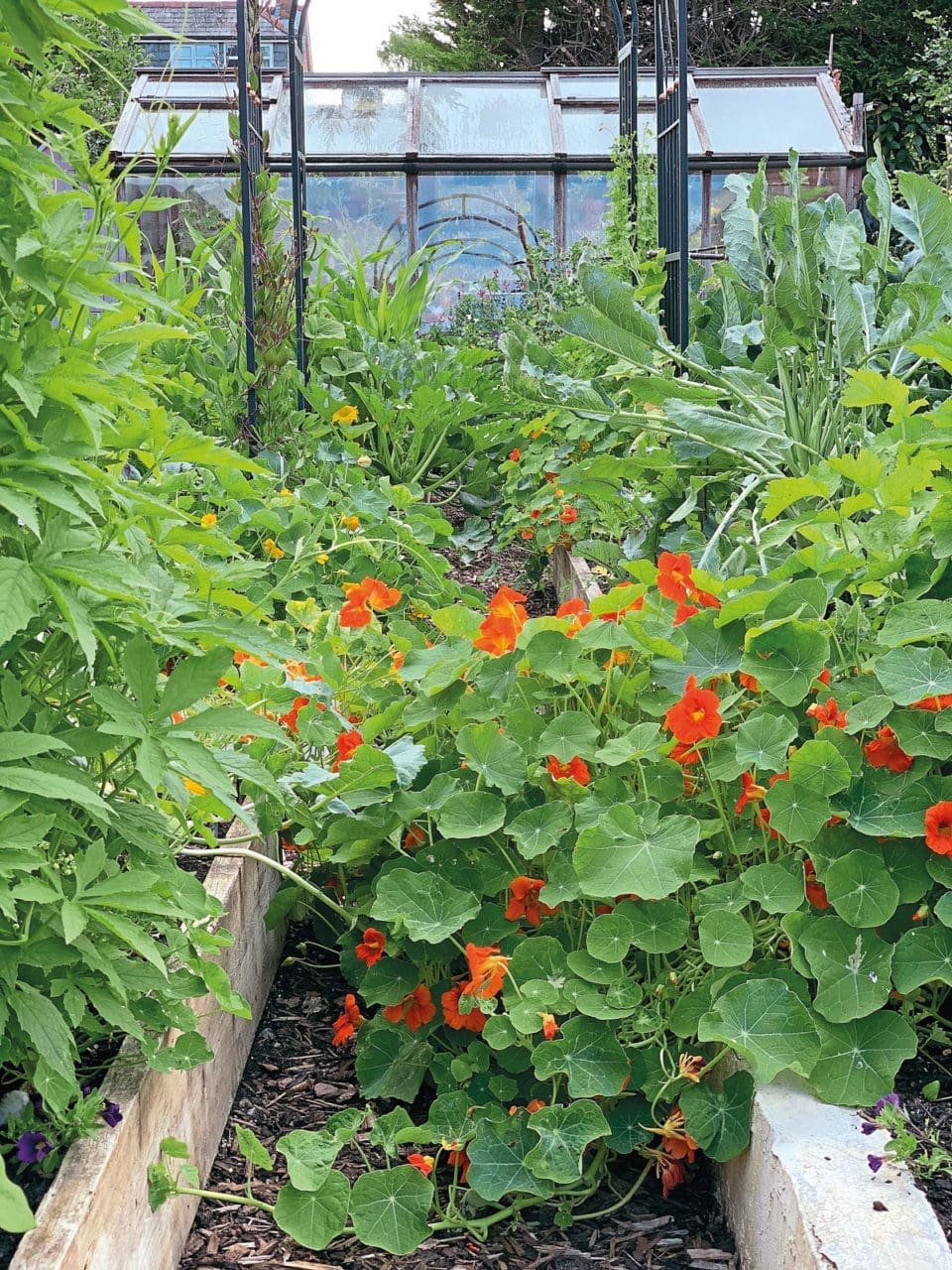
Deterring pests
Some plants are said to deter pests from our crops. For example, marigolds, onions and garlic are all strong-smelling plants that can help to deter cabbage white butterflies. Similarly, growing peas rambling through a brassica patch can help to cause a visual confusion which may also deter butterflies.
The trouble is, there is no silver bullet. There is no one thing that works 100% of the time when it comes to pests, even spraying. After all, if it worked, we would need to keep doing it!
So use companion plants and turn your garden into a wild and beautiful riot of colour and life and rejoice in the joy that it brings. But don’t expect miracles. Just appreciate that we need some pests to feed our beneficial insects and pollinators. Without the prey, the predators die out and without the predators, the prey will proliferate.

